Introduction: To Woof, Or Not to Woof?

Unlike this age-old question, puppy training is something that shouldn’t be up for debate.
I might be older and wiser myself, but I’m sure my owners will remember a time when I was less well behaved. That’s because, just like me, all puppies need proper training in order to become fully-fledged members of your home.
We can’t help being playful and a little bit mischievous sometimes, which is why we need your help to learn how we can be the best companions possible.
My humans put a lot of effort into my training when I was younger, and now they tell me I’m a good boy all the time! It’s the best!
It can sometimes take a bit of patience (and a lot of treats), and training is a continual learning curve for both you and your pup, but it’s worth it for the end results.
And I’m not just saying that because I’m biased towards treats, I paw-omise.
Take it from me when I say a trained dog is a much happier, safer dog. Sometimes when I’m too excited or if I’m on the trail of a nearby squirrel, I don’t always pay the best attention to the dangers around me.
My humans made sure I learned that if I’m told to come here or if I hear a sharp toot on my whistle then I must go back to them, that way I don’t run off too far and get myself into trouble.
For this and many other reasons which I’m about to go into, puppy training is an essential part of having a canine companion, but there’s a whole treat bag of information out there to wade through.
You know, those things that always have treats inside when you go for walkies? And they never seem to run out?
That’s what it’s like trying to navigate tips for puppy training when you’re a human, and with that much advice available, it can get a little confusing without expert help.
So, why not hear it from the dog’s mouth directly? Here’s my complete guide to training your puppy.
Why is it Important to Train Your Dog?

Safety First
As I mentioned in the introduction, a well-trained dog is a safe dog. You’ll be able to prevent your pooch from getting themselves into trouble or potentially dangerous situations if you can feel confident that they’ll listen to you when it’s most important.
This is one of the key reasons why puppy training is so essential, as an untrained dog is more likely to end up injuring themselves or getting lost because they cannot follow instructions.
If the situation calls for it and if you need to recall your dog, for example, them being well-trained enough to return could be the difference between bounding back into your arms and chasing the birds out onto a busy road.
Easy Life
If you’re after an easy life… are you sure a puppy is the right choice of pet for you? I’m only (half) kidding.
While puppies are a huge commitment, establishing a regular training routine will encourage good habits and make life as a pet-parent much easier down the line.
Your dog will learn to avoid doing the things it shouldn’t, meaning you don’t have to deal with the consequences of their latest oopsie.
You’ll spend less time clearing up after your puppy and more time playing with them and enjoying their company.
A Trained Dog Equals a Tidy Home
Not only can you keep your dog from misbehaving by training them to listen to commands that will get them to stop displaying negative behavior, but the mental stimulation they receive during training will keep them from acting out and destroying things around your home out of boredom
No more coming downstairs to bits of rubbish strewn all over your kitchen, a freshly chewed up pair of kicks, or to another accident on your recently cleaned cream carpet.
Bonding Time
Time spent training with your new puppy is also a great way to bond with them and will help to build a loving, affectionate relationship between the two of you.
Sadly, too many humans will let training slide after their puppy has learned the basic training commands.
A large part of training is actually based on building a rapport with your dog so that you can understand each other. You’ll have a better relationship and a better chance at successfully training them to follow instructions.
From the Beginning: What Should You Teach First?
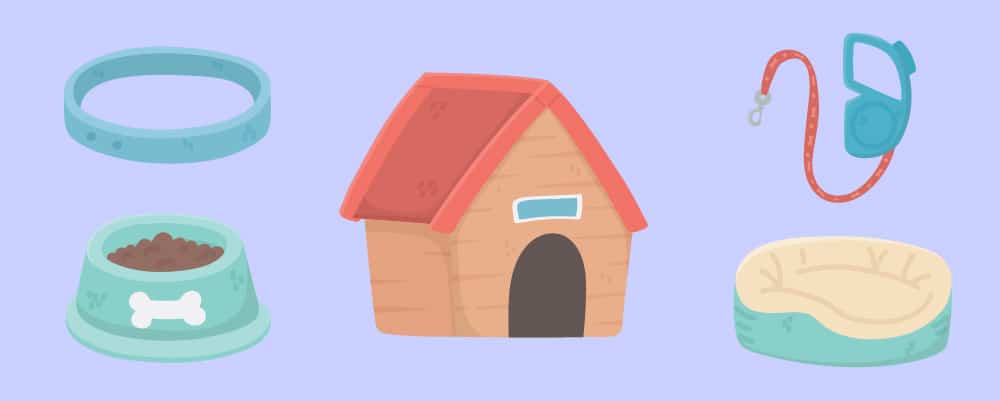
Most people assume that puppy training begins from the moment your new pooch comes home, but it’s actually the first six to eight weeks of a dog’s life that are the most critical in terms of their development.
This is before they’re allowed to be taken to their forever home which usually happens at seven to twelve weeks, and it’s just one of the reasons why it’s so important to do thorough research on the breeder before deciding where to get your furry friend from.
In order to give them a good start in life, the best and most reputable breeders will start socializing and handling puppies from birth.
Not only does this provide the foundations for you to continue puppy training at home, but it also helps to ensure that your pup is well equipped to emotionally and physiologically handle being in different environments.
The more your pooch is exposed to at a young age, the less scared or nervous they will be around new things as they get older, making it easier to train with them.
As with anything, it’s always best to begin with the basics. Once you’ve got a few of these key commands down, you’ll be able to confidently move onto some of the tricks that are trickier to master.
Sit, lie down, stay, and leave, are a great place to start.
Given the short attention span of most puppies, it’s unlikely you’ll be able to put in long sessions of training before your pup gets distracted, but they should be able to learn the basics as early as 8 weeks old as these are simple instructions that you can incorporate into your dog’s daily routine.
Another high priority on your training checklist should be house training and teaching your puppy to eliminate in the designated area.
This neatly brings us onto the first topic in our next section where I’ll be covering some specific areas of training in more detail. Get ready to talk toilets!
Dog Training 101: Your Guide to a Well-Trained Dog
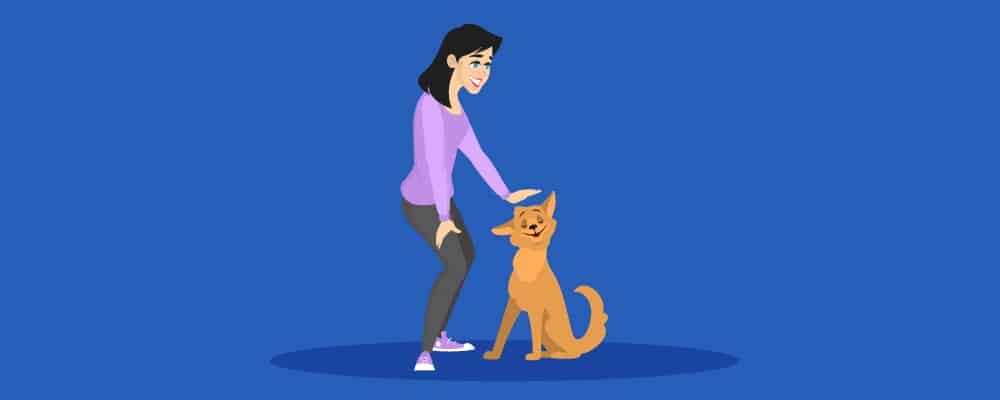
House/Crate Training: Where to Eliminate
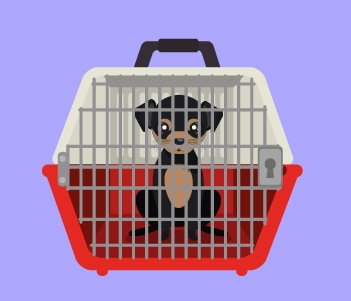 One of the first things that people like to master when training a new puppy is toilet training.
One of the first things that people like to master when training a new puppy is toilet training.
Your pooch may be cute but stepping in poop is definitely not.
Accidents will happen, so you might want to hold off on getting that new rug for now, because there’s probably going to be a few indoor doo-doos on the way to becoming house trained.
Fear not though! Your house won’t be a minefield forever as there are a number of ways to encourage your dog to eliminate in the right place.
Crate Training
Ever heard the saying, ‘don’t go where you eat’? The same can be said for your puppy and their sleeping arrangements, as dogs are naturally inclined to avoid this area when it comes to toilet time.
As a result, crate training can be used hand in hand with toilet training as it provides a safe space that will typically remain a tinkle-free zone.
This makes it the perfect place for your puppy to spend time while you pop out or if you’re unable to watch them closely, and it will help to reduce the number of accidents.
Not all people will choose to crate train, but if used properly to create a safe environment where your puppy can go to rest, they can be an invaluable tool in toilet training.
- Choose the correct size crate
- Fill it with blankets and your puppy’s favorite toys so they know it’s a safe space
- Reward your puppy with treats when they’re inside the crate
- Take your puppy outside as soon as you let them out of the crate
Puppy Pads
The great puppy pad debate is one that sees dog-owners divided, with some believing that puppy pads are a house training essential and others that they’re a pointless addition to an already new routine.
I tend to agree with the latter view of puppy pads, as introducing too many options at once may confuse your puppy making it harder for them to know where to go. However, if you are choosing to use them, make sure to adhere to the following:
- Place the puppy pad near the door (this will make it easier to eventually transition to eliminating outside exclusively) and don’t move it around the house
- Take your puppy to the pad as soon as you see any signs that suggest they need to use it.
- Reward your puppy with treats when they use the puppy pad
Outside
The first rule of training your puppy to eliminate outside is: when in doubt, let them out. Seriously.
If your dog is having to hold it up until the point when they’re bursting to go then there’s going to be far more accidents than if they’re allowed outside to relieve themselves at regular intervals.
Frequency is key.
It will vary slightly depending on the size and breed, but the general rule is that for every month of your puppy’s life they can cross their little legs for an additional hour.
They should also be allowed out in the 30 minutes after they finish eating or 10 minutes if they’ve had a drink of water.
Another tip is to avoid dithering by the door once you’ve let your dog out of their crate (if using one). In the moments you spend searching for your slippers, your puppy could leave you a hasty surprise by the time you turn back around.
Keep to a regular routine including the times they’re fed, as this will help develop a consistent schedule which will help your puppy learn when and where they should go.
Supervise your puppy more than usual while you’re housetraining so you can spot the signs when they should go outside.
Give your puppy plenty of verbal praise while they’re going about their business and have a tasty treat to hand when they come back inside so they associate eliminating outside with a reward.
It might be natural to you, but your puppy will have to learn that they’re supposed to go outside so be patient and don’t punish them when they have an accident indoors.
Leash Training: How to Walk Effectively
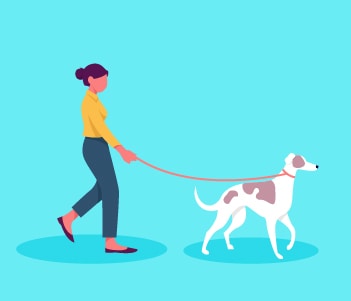 Dogs love to stop and smell the roses, the bushes, and other dog’s butts, but if they’re allowed to pause and sniff every lamppost they pass, it’ll take you an hour to complete what should be a quick circle around the block.
Dogs love to stop and smell the roses, the bushes, and other dog’s butts, but if they’re allowed to pause and sniff every lamppost they pass, it’ll take you an hour to complete what should be a quick circle around the block.
Leash training can help your dog walk nicely beside you at your heel.
In addition to being a legal requirement in some areas at the risk of a fine for non-compliance, leash training is also sometimes essential for the safety of your puppy.
For example, when you’re near the main road or an area with busy traffic, a lead can prevent them from running out in front of cars.
Sometimes your puppy will flat-out refuse to budge, and they’ll park their butt on the sidewalk in an act of rebellious defiance.
As frustrating as this may be, especially on days when you’ve ventured out in the wind and rain, never drag or forcefully pull your dog along after you on their leash.
If your puppy is showing a real aversion to walking with a leash, consider changing their collar to a harness, or vice versa, as they may be feeling uncomfortable.
For particularly problematic pooches, you may benefit from a head harness or head collar which makes it easier to control their movement. However, this should only be a temporary training aid.
Seeing as this will be an unavoidable part of your dog’s training and indeed, general life, it’s important to get this right so your puppy doesn’t grow up with a fear of using a lead, as this could cause them to act out when you’re walking.
Here are some tips for helping your puppy to feel comfortable with their leash:
- Introduce the leash and let your puppy investigate by having a good sniff.
- Don’t let them chew it! Bad habits are hard to break and this is not a toy.
- Attach the leash indoors so that the puppy can get used to the weight and feel of it.
- Keep it loose and don’t correct your pup or pull on the leash while they become comfortable with you holding it.
- Try to create a positive experience by giving lots of treats and praise.
Once your puppy is comfortable with a leash, you can begin building up to your first outdoor walk.
You still need to take it one step at a time, but here’s my advice on how to teach your dog to walk effectively alongside you without stopping or pulling.
- Standing still, let the leash go slack and wait for your puppy to look up or pay you attention. The moment they do, give them a treat.
- You can now begin to walk, praising your puppy with frequent treats and verbal encouragement as they stay close to you.
- If the leash becomes tight or if your puppy starts to pull away, stop walking. This will teach them that pulling on their leash will get them nowhere. Quietly wait for them to turn their attention back to you, and when they move closer again, reward your puppy and set off while they’re still your heel. Repeat this step every time your dog pulls the leash too tightly.
- It can be a good idea to practice this indoors at first, as when you move to outdoor walks there will be a whole lot more to distract your puppy and pull them away from you.
It’s good to remember that dogs are at their most curious when they’re a puppy, so make sure you allow them to stop and investigate every now and then.
They might be sniffing out a good area to do their business, and I’m pretty sure you wouldn’t appreciate being yanked off the toilet, so don’t yank your dog’s leash either.
Plays Well with Others: Socializing with Other Dogs
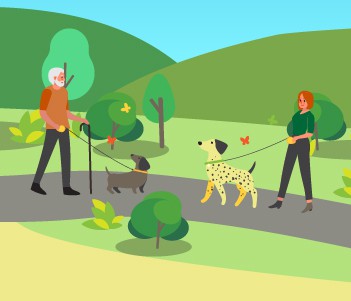 Nobody wants to see their puppy being left out at the local park because they didn’t learn how to play nicely when they were younger.
Nobody wants to see their puppy being left out at the local park because they didn’t learn how to play nicely when they were younger.
Puppies experience a socialization period that lasts between when they’re seven to up to sixteen weeks old, during which they’re at their most adventurous, inquisitory, and exploratory, so you should aim to introduce them to as many new people and experiences as possible.
They’re much more open to interacting with other people and dogs at this stage in their life, so it’s important to make sure that these experiences are all fun and enjoyable as this helps to create a positive attitude that will stay with your dog as they grow up, resulting in fewer fears or phobias.
It’s natural for this period to be followed by one in which your puppy acts more tentative and wary but provided you don’t force them into situations that frighten or overwhelm them, it should be a phase that your dog will grow out of.
Your puppy will receive an initial vaccination at eight to ten weeks and should have a second two to four weeks later. Until they’ve been fully vaccinated, avoid contact with other dogs unless you know they’re also protected by the vaccination
Meeting outside is advisable if you’re introducing two dogs for the first time as there’s plenty of space to become more comfortable around each other. It’s also where your puppy will have the most interaction with dogs they don’t know.
- Try to schedule your first few trips to the park during quieter times. If there are too many other dogs around your puppy may end up feeling overwhelmed.
- Always reinforce positive social behavior by rewarding your puppy with treats and affection when they interact nicely with another dog so they’ll remember it as a pleasant experience.
- Do exercise caution, especially if you don’t know the other dog, but remain calm even if your puppy is behaving slightly skittishly.
- Recognize when your puppy is showing genuine signs of distress or discomfort and don’t force them. This includes hiding behind you, whimpering, trying to jump up, and holding their tail between their legs.
Introducing two dogs in the home can be slightly trickier, especially if one dog lives there as their scent will be all over the house and they’re more likely to act territorially.
The same principles as above should be applied but you should also give both dogs lots of attention to avoid any jealousy.
Puppy training classes are another great way to socialize your dog because they’ll be around other pups their own age.
This is less intimidating for your puppy than meeting dogs who are bigger and older than they are at the local park.
Clicker Training: Reacting to Sounds
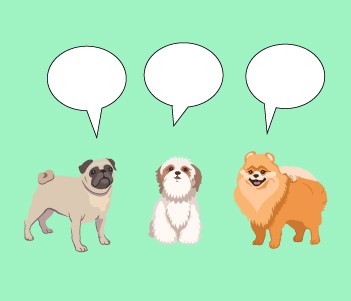 Training in a large, open space where your dog is free to run far and wide can sometimes make it difficult for them to hear your voice across the distance between you.
Training in a large, open space where your dog is free to run far and wide can sometimes make it difficult for them to hear your voice across the distance between you.
Clicker training is a great way to bridge this gap and it’s a clearer method of positive reinforcement.
In the earlier stages of your training journey, it’s important to ensure that the rewards are strong and frequently given.
This is especially true for clicker training as the whole idea of it is based on repetitive positive reinforcement or operant conditioning as it’s technically known.
My top tip would be to choose treats that are smaller, less unhealthy, and definitely less expensive as you’re likely to get through quite a few of them while you practice your puppy’s clicker training.
- Puppy, Meet Clicker
To introduce your puppy to the clicker, first, find a quiet area in which to practice. Press the clicker and immediately give your dog a treat.
Do this again anywhere between five and ten times to encourage the association between the click and the reward.
- Testing, Testing?
Next, you’ll need to see if your dog is picking up on what you’re trying to teach them. When your puppy is not focused on you, press the clicker and watch to see if your dog registers it.
If they look up at you expectantly then you’ll know it’s working, but if your puppy ignores you then keep repeating the click and reward combination until they’ve made the connection.
- It’s All About Accuracy
It’s really important to make sure you only click at the precise moment your dog correctly follows a given command, which should be immediately followed with the reward and verbal praise.
Getting trigger happy with the button and clicking at the wrong time will cause confusion over why your dog is being rewarded, and it’ll take longer for them to learn what they need to do next time.
- Clickety Clack (Don’t Talk Back)
You can use the clicker tool for both basic commands and more advanced training purposes, making it a versatile choice of training aid.
Some people even progress all the way to hands-free commands where you phase out the hand gestures typically used alongside the verbal instruction.
However, if your puppy is not particularly treat-motivated, this will be a less effective training method and you certainly won’t be able to rely on it for advanced commands.
Commands and Instructions: Working with Your Dog
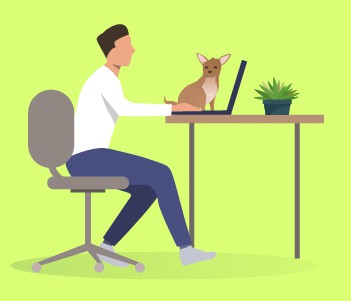 If you’ve ever seen a dog walking by with their owner, side-by-side without a lead insight, and thought to yourself, “how did they ever train their dog that well?” just remember that they will have started off with the same basic commands and instructions that we all do.
If you’ve ever seen a dog walking by with their owner, side-by-side without a lead insight, and thought to yourself, “how did they ever train their dog that well?” just remember that they will have started off with the same basic commands and instructions that we all do.
It’s not all about how hard the dog works though, and as the human, you’ll have to work just as hard (if not harder!) during training to keep the session running smoothly.
It’s your job to clearly speak instructions and to avoid hand gestures that will confuse your dog. Ultimately, your puppy will want to please you, so work with them by committing to their training.
Try to limit the number of times you repeat yourself before your puppy performs the given command, as otherwise they’ll grow used to hearing it repeated and won’t always react to the first instruction which can cause a potentially dangerous delayed response.
Reward your puppy with tasty treats when they do what you ask as this will associate the instruction with positive reinforcement.
Secondary reinforcement is considered to be any sign of affection, such as a gentle pat on the head, and always remember to give verbal praise to your puppy as well.
If you’re struggling with a particular training exercise, make sure to have a few particularly delicious treats on you for extra encouragement. Chicken or beef chopped up into small bites are my favorites for an extra ‘wowzer’ treat.
It can also be a good idea to schedule training sessions just before a meal when your puppy will be hungry and more receptive to instruction in order to earn their treats.
Remember that your puppy will need to learn the command as well as the action that goes with it, so say the word to go with it when they move into each position correctly.
With enough practice, you can eventually replace the treat entirely with the command, and the action will immediately follow.
With these general hints and tips in mind, here’s how to teach your puppy some of the basic commands we’ve discussed. The rest of the essentials are covered in ‘Advanced Training’ due to their higher level of difficulty.
Sit
Sit is a great instruction that will help in a number of situations. Whether you’re putting your puppy’s harness on ready for a walk or brushing their fur, the sit command will force your pup to pause for a moment.
It also provides the foundation point for more advanced instructions.
- When your puppy is standing, hold a treat close to their nose and raise your hand in an overarching motion.
- Their head will tilt upwards as their eyes follow the treat which will naturally cause their bottom to drop down to the floor into a sitting position.
- Once they’re sitting, praise your puppy and reward them with the treat.
Lie Down
Lie down can be used to encourage your dog to settle, for example, when you’re eating dinner or watching TV and you’d rather they weren’t fussing around you.
Never push your puppy or force them into a lying down position, as you might scare them when they’re only trying to learn.
- You’ll need to have cracked ‘sit’ before you tackle ‘lie down’, as this is the position your puppy should start in.
- From their nose, guide the treat downwards past your puppy’s chest until your hand reaches the floor.
- Your dog will (or at least, should) follow the direction of your hand until they too are on the floor, stretched and lying down. Immediately praise and give the treat.
Stay
Much like using ‘sit’, asking your dog to stay will come in handy when you need your puppy to remain in one spot.
If you’re leaving your house, asking your puppy to stay will ensure they don’t get close enough to escape as you open the door.
- Again, begin by asking your dog to sit.
- Hold the palm of your hand up facing towards the dog and tell them to stay.
- Maintaining eye-contact, move backward a few steps. Start off small, but over time you can gradually widen the gap between you to test your puppy’s restraint.
- If they stay put, praise and reward them straight away.
Wrapping it Up: Proofing Your Dog’s Behavior
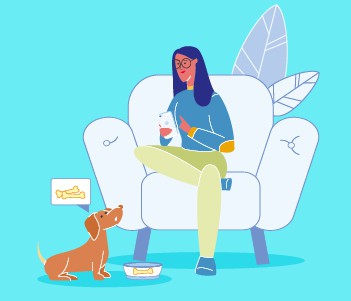 Now you’ve worked your way through all the key commands, it’s time to put your puppy to the test by proofing their behavior.
Now you’ve worked your way through all the key commands, it’s time to put your puppy to the test by proofing their behavior.
This is when you practice what your dog has learned in a new environment to ensure that they can still perform the command when there are other distractions around them.
It’s the final step in your dog’s journey, and once you’ve proofed and mastered each of the most important instructions, you’ll be able to be confident that your puppy is well-trained enough to listen to you and follow commands in pretty much any situation.
Prior to moving onto this part of your puppy’s training, you must make sure they already have a good understanding of the command you’re going to be practicing.
If they’re able to perform the action instantly when asked and show no confusion between instructions, you should be good to go.
When you’re proofing your puppy’s behavior, it’s not a good idea to overwhelm them by throwing them into a busy environment with multiple different distractions.
Instead, limit the variable thing one at a time to help your pup adjust, as this way they’ll learn to follow the commands much faster.
As with every stage of training, be generous with rewards, and continuously praise your puppy as they achieve each goal you set.
At the same time, try to be realistic and don’t allow your dog to become frustrated by a lack of progress that’s due to your overly high expectations.
Finally, don’t forget that you need proofing too! Try asking a friend to join you for your next training session and get them to give the command to your puppy so they can learn to take instruction from different people.
This will be invaluable if you’re ever away and someone else is dog-sitting for you.
Bonus: Advanced Dog Training
 Once you’ve mastered the basic instructions, these provide the basis for a whole range of more difficult commands and tricks that you may want to teach your dog.
Once you’ve mastered the basic instructions, these provide the basis for a whole range of more difficult commands and tricks that you may want to teach your dog.
You can also teach them some of the less essential but more fun tricks, which you can continue to do throughout their life for quality time together and mental stimulation.
Come
Recall is one of the more difficult parts of training to master, and it can be quite anxiety-inducing for owners to let their puppy off the leash as they progress.
If you’re in the early stages of practicing recall and you’re feeling a little nervous about being able to entice your suddenly liberated puppy back to you, it’s time to crack out those wowzer treats I mentioned earlier.
- Have your extra tasty treats at the ready, or a favorite toy would also work instead. Make sure your puppy has seen these.
- Back up a few steps, keeping the distance minimal at first, and call your dog to you. This is best done with a light, friendly tone, or you can drop low and spread your arms open wide to encourage your dog to return.
- When your puppy reaches you, reward them with the treat or toy.
- Over time and with practice, you’ll be able to gradually make the gap between you wider until your dog will come running towards you across an entire field or from a different room.
- Top Tip: This is a part of the training that benefits from having a second person, as you can call your puppy between you.
- Another way to alleviate some of the stress of practicing recall with your puppy outdoors is to use a training lead, as this gives them a lot more freedom so they can get used to longer distances without giving them the chance to run off entirely.
Leave
Curiosity killed the cat but teaching your dog to ‘leave’ will prevent them from eating something potentially poisonous or harmful which can result in an upset stomach.
It’s one of the trickier commands as it requires a lot of restraint on your dog’s part, especially if they’ve found something particularly interesting.
You’d be surprised at what dogs will happily put in their mouths at their own detriment, so it’s worth persevering with. Besides, it might be the only way to save your favorite book from destruction if they get their paws on it!
- Hold a treat in both hands.
- Wrap one of your hands around the treat to create a fist and ask your dog to “leave it.”
- Pay no attention while they attempt to retrieve the treat from your grasp.
- When your puppy has ceased trying, reward them with the treat from the other hand, and give plenty of praise.
- Repeat this until your dog will obediently leave your enclosed hand alone when asked
Once you’ve nailed down the basic principle, you can progress to teaching your puppy to leave treats that are on the ground which is the more challenging part.
- Again, have two treats ready, but this time have a plain treat and a treat that’s especially mouthwatering.
- Place the plain treat on the floor and place your hand over the top., asking your puppy to “leave it” at the same time.
- When their focus is on you and they’re ignoring the treat, reward them with the extra tasty treat and give lots of attention and praise. Then repeat!
- As your dog gets better at this, you can remove your hand from the treat and ask them to leave. Once you’re happy, try standing up completely. Eventually, you’ll be able to give this command and take several steps back, or even leave the room completely, with the confidence that your dog won’t touch the treat until they’re given permission to take it.
Conclusion: A Well-Trained Dog!
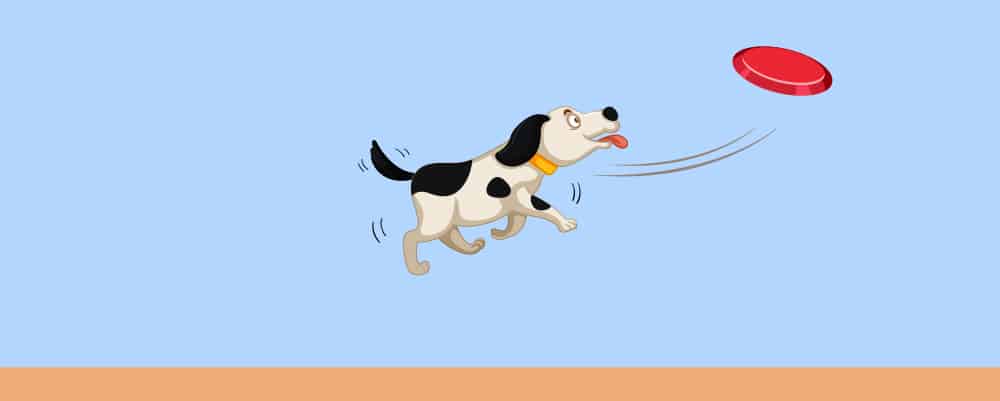
Just like owning a dog in general, training isn’t something you can commit to for six months and then give up on when the novelty wears off.
Training is a life-long process where you and your dog will be continuously learning and improving, rather than a quick-fix behavioral crash-course.
It’s difficult to encapsulate absolutely everything you need to know about puppy training in a single place, but I hope I’ve provided a comprehensive enough guide to get you well underway on your puppy training journey.
Finally, remember to be patient with your puppy while they’re still learning. Dogs are another furry member of your family, so giving them lots of love and affection while you’re training will teach them to be loving and affectionate in return.
We’re not called man’s best friend for nothing